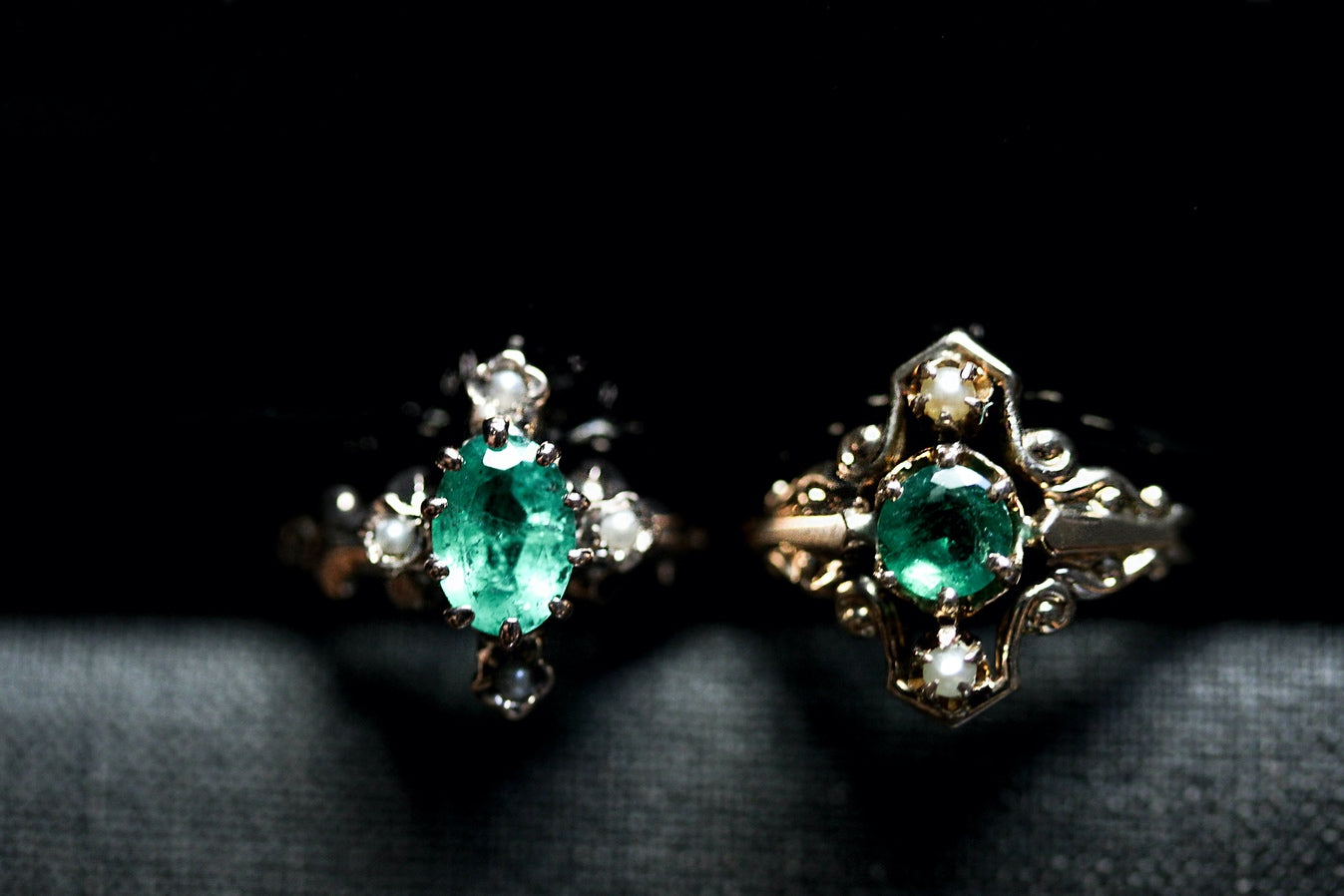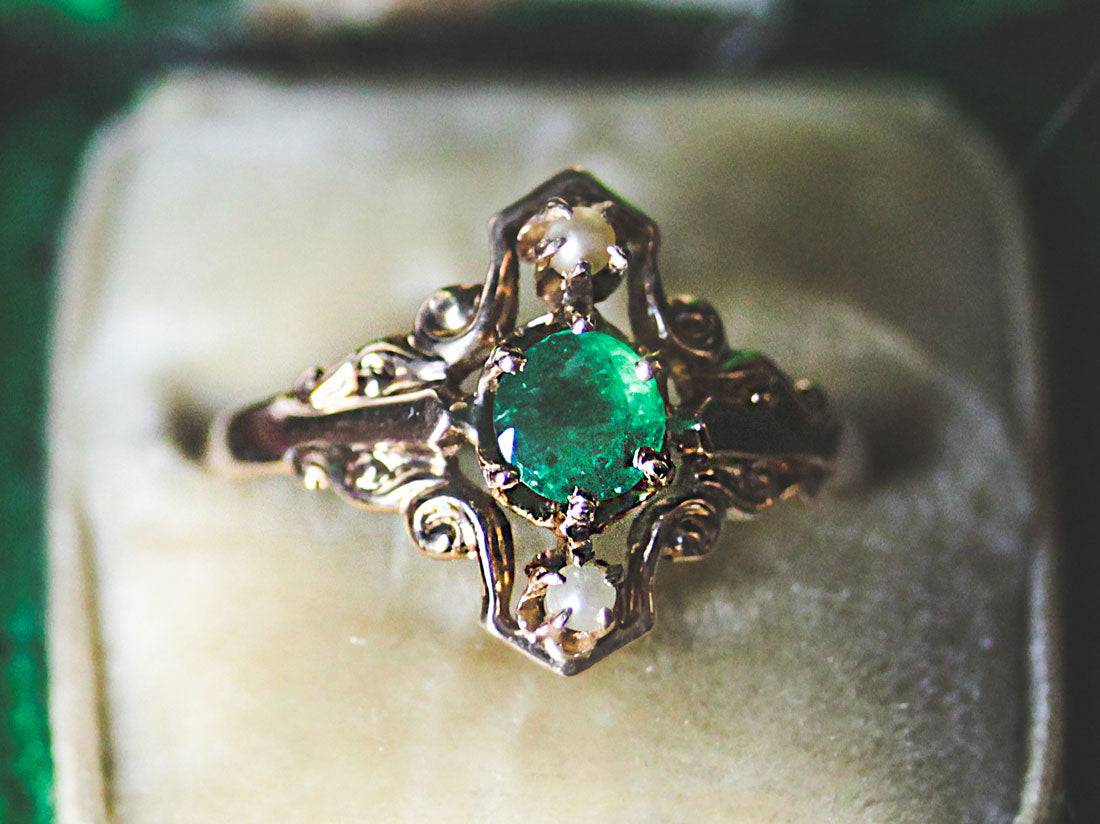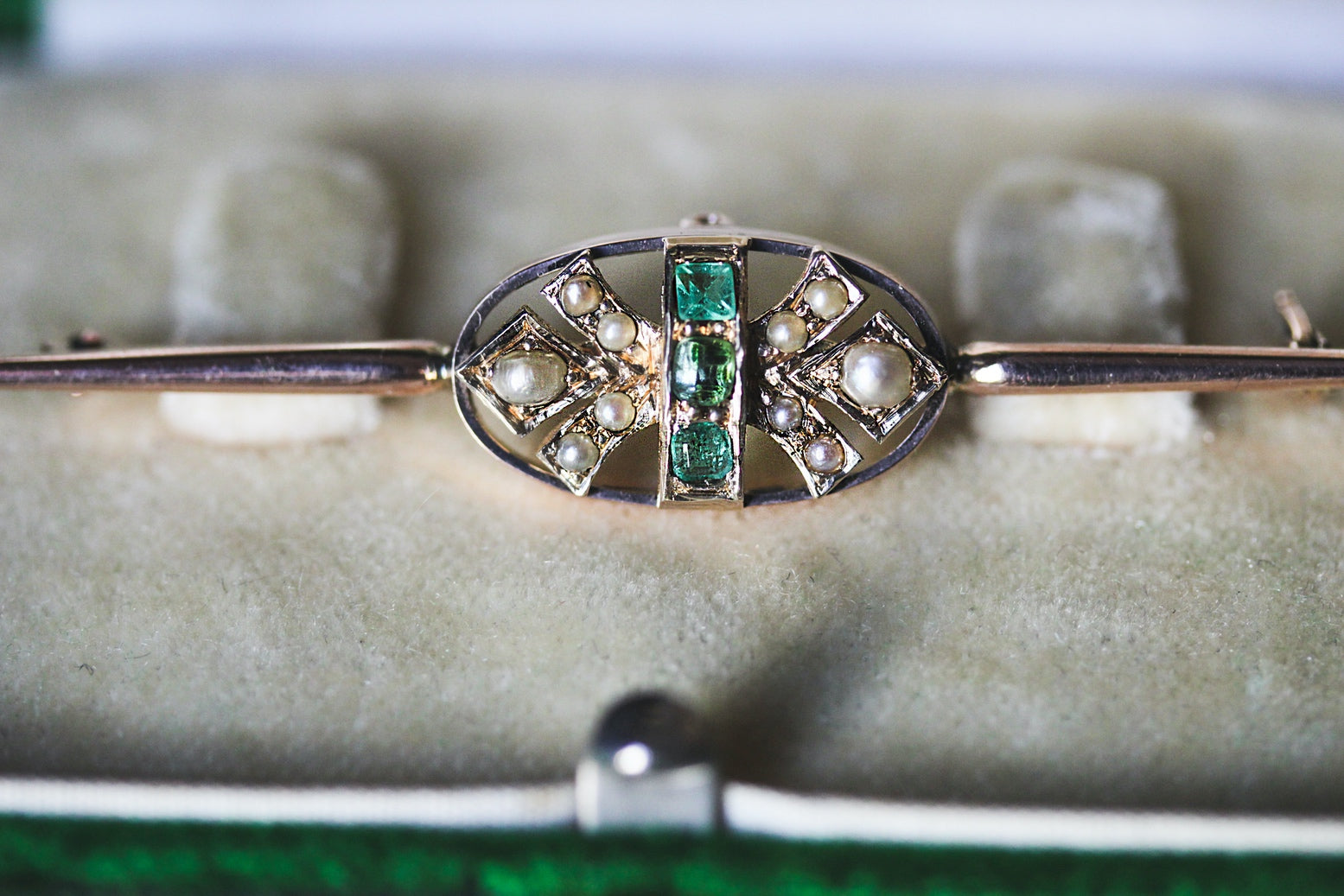the largest estate jeweler in New England | 7 locations | 5 Days a week live shopping on instagram
the largest estate jeweler in New England | 7 locations | 5 Days a week live shopping on instagram
Add description, images, menus and links to your mega menu
A column with no settings can be used as a spacer
Link to your collections, sales and even external links
Add up to five columns
Add description, images, menus and links to your mega menu
A column with no settings can be used as a spacer
Link to your collections, sales and even external links
Add up to five columns
Rhapsody in Green: Emerald History, Properties, and Lore
April 26, 2019 4 min read

Among the most coveted gemstones, an emerald is a piece of history and a wearable work of art. Representing the "color of spring," emeralds are said to signify hope, new growth and eternal life. In addition to being May's birthstone, emeralds are also the traditional gemstone for 20th and 35th wedding anniversaries.
What is an Emerald?
Emeralds are perhaps the most well known of all the beryl gemstones, a group that also includes aquamarine, morganite, and heliodor. Emeralds have a chemical composition of silicate of aluminum and beryllium, with the trace elements chromium, vanadium, and iron. It is these trace elements that give emeralds their iconic green color.
Emeralds have a hardness of 7 1/2 to 8 on the Mohs Scale, which is a method of determining gemstone hardness in comparison to a diamond (which is a 10). Simply put: the higher the number, the harder the material. As a beryl mineral, emeralds are harder than most gemstones, but still run the risk of damage, as their naturally occurring inclusions make them susceptible to fracture.

Inclusions and Growth of an Emerald
Emeralds are one of the few gemstones in which inclusions are not only tolerated, but considered to be a magnificent part of the gemstone’s character. These inclusions come from the stormy and turbulent environment in which the gems formed, over 100 million years ago. Each inclusion tells us something about what earth was like when the emerald developed, like a miniature time capsule of the earth’s development.
Emeralds are the only precious gemstone that can contain three different types of inclusions (liquid, gas, and solid) within the same stone. This means that there could be a bubble of air from over 100 million years ago, as well as a drop of water and a piece of solid matter that are all contained within the same gemstone. In fact, scientists have analyzed tiny samples of “fossil air” contained within emeralds to examine what the earth was like 100 million years ago, giving us a fascinating view into the world’s geological history.

Color of an Emerald
Color is the most important factor when picking out an emerald. The finest color for emeralds is described as a deep, intense velvety shade of green. There is some confusion surrounding the difference between green beryl and emerald, as color perception can be subjective. In general, most gemologists agree that to be considered an emerald, the green color must be deep and saturated. The Gemological Institute of America (GIA) has its own benchmark emeralds that they use to compare the color of beryl gems brought in for grading. The simple distinction of green beryl to emerald results in a huge jump in value.
At Market Square Jewelers, we travel to Colombia on frequent buying trips, where we examine over 100 emeralds for every one gem we bring back for our collection. When trying to determine the source of your emerald, keep in mind that appearance is often associated with mine location. Emeralds from Colombia, highly coveted and considered to be some of the world’s finest, often have a bluish green to pure green hue. Other sources of emeralds are Brazil, Zambia, Afghanistan and Russia.

Emerald History and Lore
With a long history, emeralds are well known throughout ancient lore. The earliest emerald mines are believed to have been in Ancient Egypt around 330 B.C.E. The gem was favored by no less than Cleopatra, who is famous to this day for her luxurious style. On the other side of the world, emeralds were treasured by the Inca, as well. Later, their supply was plundered by Spanish conquistadors who introduced the incomparable South American emerald to the rest of Europe. This gem would continue to be favored by royals, including Queen Victoria who was given a serpent shaped ring set with an emerald as an engagement ring from Prince Albert.
Beyond their beauty, emeralds have deep symbolism and mysticism surrounding them. Once believed to cure diseases like cholera and malaria, Rome’s Pliny the Elder described the use of emerald by early lapidaries, who “have no better method of restoring their eyes than by looking at the emerald, its soft, green color comforting and removing their weariness.” Sacred across cultures and religions all over the world, emeralds are believed to bring protection, well-being, and good fortune to the wearer.

Wearability and Durability of Emeralds
We are often asked if emeralds are too delicate to wear on a regular basis. If treated with appropriate care, emeralds can be worn for a lifetime. We recommend you don’t wear your emeralds around any strong household cleaning products. In our shop, we don’t use traditional jewelry cleaner with an emerald, nor do we recommend putting them in an ultrasonic cleaner or using hard chemicals. We find the best way to clean your emerald is with a bowl of warm water and a drop of mild cleanser, like dish or hand soap.
Most emeralds have been treated at the mine, with cedar oil for example, to increase their durability and reduce the appearance of inclusions. Cedar oil in particular is used because it has a similar refractive index to emeralds, and will keep the gem looking its best. Overtime, the emerald can lose its oil (you may notice the gem's inclusions more prominently), so having your emerald re-treated with cedar oil will help to increase its longevity. Click here to learn more about the proper care and maintenance of emeralds.
Whether you wear emeralds for their beauty, history, or symbolism, this is a gemstone that will never go out of style. To discover emerald earrings, rings, pendants, and bracelets, shop our emerald jewelry collection. From Victorian to modern, you are sure to find the perfect emerald piece for you!
Also in MSJ Handbook

The Apple of Our Eye: Jade
May 29, 2025 3 min read
This powerful, ancient gemstone is still a treasure today.

Chrysoprase: The Golden Green Gem
September 17, 2021 2 min read
Subscribe
Get 10% off your next purchase!


